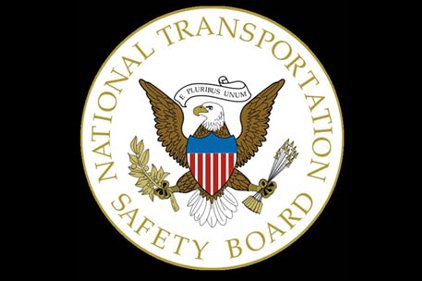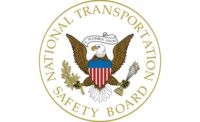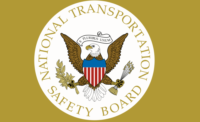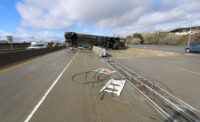 A school bus driver’s failure to observe a truck as it was approaching the intersection caused a 2012 collision in New Jersey that killed one student and injured fifteen more students and the driver, according to the National Transportation Safety Board (NTSB).
A school bus driver’s failure to observe a truck as it was approaching the intersection caused a 2012 collision in New Jersey that killed one student and injured fifteen more students and the driver, according to the National Transportation Safety Board (NTSB).
The crash occurred on February 16 near Chesterfield, when a school bus transporting 25 students was traveling northbound through an intersection. At the same time, a Mack roll-off truck with a fully loaded dump container was approaching the same intersection. As the school bus proceeded across the intersection, the truck collided with the left rear of the bus. The bus rotated and struck a traffic beacon support pole.
And the the reason for the bus driver’s reduced vigilance?
Lack of sleep the culprit
The NTSB says the bus driver’s cognitive decrements were due to acute sleep loss, poor sleep quality and the side effects of the prescription medications he was using to try and sleep.
The truck and its driver, however, also bear some responsibility in the accident.
Defective brakes made accident more severe
The NTSB found that the truck which struck the school bus was traveling in excess of the 45-mile-per-hour speed limit and was being operated in an overweight condition. The truck also had defective brakes and a lift-axle brake system that was improperly installed by the truck’s final stage manufacturer.
“These conditions contributed to the severity of the crash,” said the NTSB in a statement.
Investigators determined that the severity of passenger injuries on the school bus were exacerbated by the nonuse or misuse of the bus passenger lap belts; the lack of protection from interior sidewalls, sidewall components and seat frames; and the high lateral and rotational forces in the back portion of the bus. The investigation found that properly worn passenger lap belts were beneficial in reducing fatalities and injuries.
Still a safe mode of transport
Despite the collision, NTSB Chairman Deborah Hersman said school buses are still the safest way to transport children to school.
“The 26 million students across the United States who ride buses to school are safer than when they are driven by adults and are far safer than when driven by a teenager," she commented.
The NTSB reviewed national statistics regarding intersection crashes and noted that in 2011 alone, 6,817 fatal crashes occurred at intersections, resulting in 7,265 fatalities. “Connected vehicle technology – where vehicles communicate with other vehicles – holds great promise to reduce the tremendous death toll resulting from intersection crashes,” said Hersman.
As a result of this accident investigation, the NTSB issued safety recommendations to the:
• Federal Motor Carrier Safety Administration
• National Highway Traffic Safety Administration
• National Truck Equipment Association
• National Association of State Directors of Pupil Transportation Services, National School Transportation Association, the National Association of Pupil Transportation, School Bus Manufacturers Technical Council and National Safety Council School Transportation Section
• Herman’s Trucking, Inc.
• The states of California, Florida, Louisiana, New Jersey, New York and Texas
The NTSB also reiterates four recommendations to the FMCSA and three recommendations to the NHTSA.
The safety recommendations address the medical certification of commercial drivers, school bus occupant protection, seat belt education, commercial truck operation and maintenance, and crash-avoidance technologies.
To view the summary of this accident including findings, probable cause and recommendations, click on the following link: www.ntsb.gov/news/events/2013/chesterfield_nj/presentations.html






